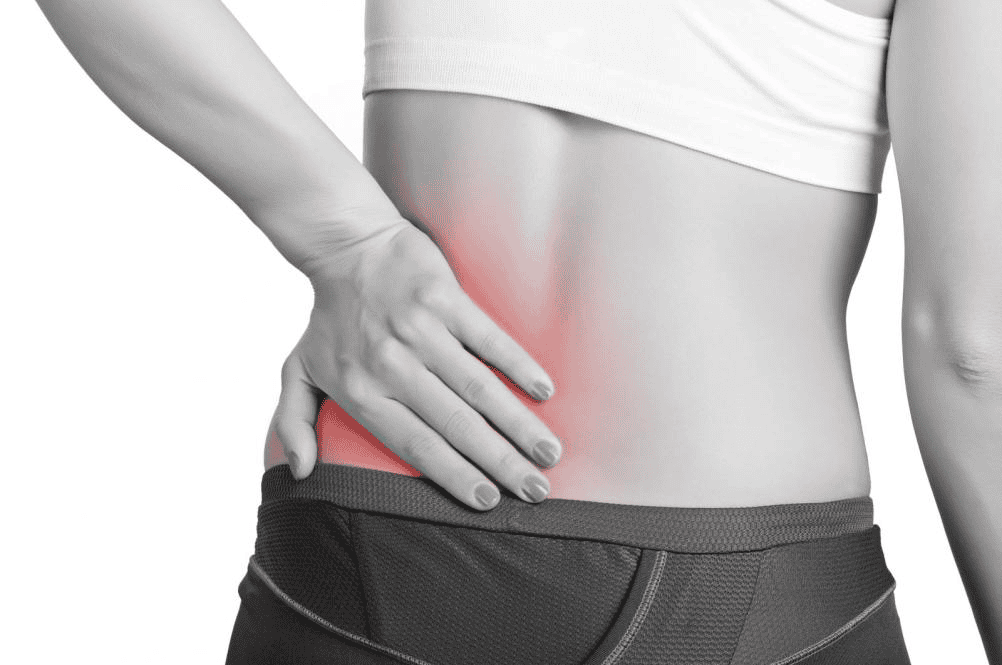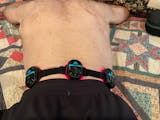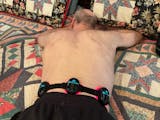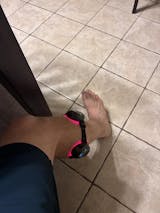Lower back pain is a widespread issue that many people experience at some point in their lives. Whether from daily activities, injuries, or even stress, it can significantly impact your quality of life. Fortunately, there are various treatments available that can help alleviate the discomfort, and one promising solution is the use of medical-grade red light therapy devices. This article will explore the common causes of lower back pain and how red light therapy can assist in managing it.
Common Causes of Lower Back Pain
Poor Posture and Alignment
One of the most common causes of lower back pain is poor posture. Many people spend hours sitting at desks or hunched over their phones, which can lead to misalignment in the spine. Over time, this constant strain on the back muscles can result in pain and stiffness. Practicing good posture—standing tall and keeping your shoulders back—can help reduce the risk of developing back pain. It’s also important to regularly stretch and strengthen the muscles around the spine.

Muscle Strain and Overuse
Muscle strain is another leading cause of lower back pain. Lifting heavy objects improperly or engaging in physical activity without proper preparation can strain the muscles in your lower back. Overusing these muscles, especially if they are not conditioned, can also lead to discomfort. Simple exercises, like gentle stretching or strengthening the lower back and core muscles, can prevent strain and help maintain muscle flexibility and strength.
Herniated or Bulging Discs
A herniated or bulging disc occurs when one of the discs in the spine slips out of place, causing pressure on nearby nerves. This can result in sharp pain and discomfort in the lower back and sometimes even radiating pain in the legs. If you suspect you have a herniated disc, it's important to seek medical advice for proper diagnosis and treatment. FDA approved red light therapy can be an effective way to reduce inflammation and promote healing in such cases.
Sciatica and Nerve Issues
Sciatica refers to pain that radiates from the lower back down to the legs due to compression or irritation of the sciatic nerve. This can cause sharp, shooting pain and numbness in one leg. Sciatica is often caused by a herniated disc or other issues affecting the spine. While medical treatment is necessary, medical-grade red light therapy devices - PRUNGO FluxGo may help alleviate the pain and improve circulation, providing relief for those suffering from sciatica.

Lifestyle Factors Contributing to Lower Back Pain
Sedentary Lifestyle
Spending long periods sitting—especially in improper postures—can weaken the muscles that support your spine, leading to lower back pain. A sedentary lifestyle contributes significantly to back problems by reducing flexibility and strength in the core muscles. Incorporating regular movement, stretching, and exercise into your routine can help prevent and relieve back pain. Even short walks throughout the day can make a big difference.
Weight Gain and Poor Nutrition
Excess weight puts additional pressure on your lower back, causing pain and discomfort. A poor diet, especially one lacking in key nutrients like calcium and vitamin D, can also contribute to weaker bones and muscles. Maintaining a healthy weight through a balanced diet and regular exercise is essential for preventing back pain. Strong bones and muscles will provide better support for the spine, reducing the risk of injury and pain.
Sleep Position and Mattress Choice
Your sleep position and mattress can also play a big role in lower back pain. Sleeping on a mattress that doesn’t provide adequate support can result in misalignment of the spine, leading to pain upon waking up. The position in which you sleep can also contribute to discomfort. Try sleeping on your side with a pillow between your knees or on your back with a pillow under your knees to maintain proper alignment.

Injuries and Accidents Leading to Lower Back Pain
Sports Injuries
Physical activities like running, lifting weights, or playing contact sports can result in lower back injuries, especially if done improperly. These injuries can range from muscle strains to more serious issues like herniated discs. It’s important to warm up properly before exercising and to use the right techniques to avoid injury. If you experience lower back pain from sports activities, rest and seek professional treatment.
Auto Accidents and Trauma
Car accidents or other traumatic events can cause significant injuries to the lower back. The force from an accident can result in sprains, strains, or even fractures in the spine. Whiplash, which occurs when the head moves abruptly during an accident, can also affect the lower back. In these cases, it’s important to seek medical attention right away. After the initial treatment, red light therapy can help reduce inflammation and promote healing.
Falls and Slips
A fall, especially one where you land on your back or twist in an awkward position, can cause acute lower back pain. In these situations, the muscles or even the discs in your spine can be damaged. Immediate care, such as ice packs and over-the-counter pain relievers, can help manage pain, but seeking professional advice is often necessary to prevent long-term issues. red light therapy at home can be used as part of the recovery process to ease pain and inflammation.
How Stress and Mental Health Impact Lower Back Pain
Muscle Tension Due to Stress
Chronic stress can cause muscle tension throughout the body, including the lower back. When you’re stressed, your body produces tension as a natural response, and if this tension isn’t released, it can contribute to pain. Practicing stress management techniques, such as deep breathing, yoga, or meditation, can help reduce muscle tension and alleviate back pain.
Anxiety and Depression
Mental health conditions like anxiety and depression can heighten the perception of physical pain. Individuals experiencing these conditions may report feeling more pain or discomfort, including lower back pain. Addressing the mental health aspect of pain through therapy or counseling can provide relief. Additionally, red light therapy machine can assist in alleviating the physical symptoms associated with stress and anxiety, helping to manage pain more effectively.

Aging and Degenerative Conditions
Osteoarthritis and Degenerative Disc Disease
As we age, the discs in our spine naturally begin to wear down, which can lead to conditions like osteoarthritis or degenerative disc disease. These conditions often cause pain and stiffness in the lower back. While aging is unavoidable, staying active, stretching regularly, and using treatments like fda approved red light therapy devices for pain can help reduce the symptoms and improve quality of life.
Spinal Stenosis
Spinal stenosis occurs when the spinal canal narrows and puts pressure on the nerves. This condition is more common as we age and can cause lower back pain and even leg weakness. Treatment often involves physical therapy and in some cases, surgery. However, using red light therapy regularly can help reduce inflammation and promote healing, providing some relief for individuals with spinal stenosis.
How Red Light Therapy Can Help Relieve Lower Back Pain
What Is Medical-Grade Red Light Therapy
Medical-grade red light therapy involves using low-level lasers or LED lights to penetrate the skin and stimulate cellular repair. This type of therapy can reduce inflammation, increase circulation, and promote tissue regeneration, all of which are crucial for relieving pain. Red light therapy has become an increasingly popular treatment for managing lower back pain, offering a non-invasive and effective option for pain relief.

Benefits of Red Light Therapy for Pain Relief
For individuals suffering from lower back pain, red light therapy can significantly reduce pain and inflammation. It can enhance the body’s natural healing processes, speeding up recovery times and improving mobility. Using a red light panel regularly on the affected area can provide long-term relief from chronic pain, especially when combined with other treatment strategies like physical therapy or exercise.
How to Use Red Light Therapy for Lower Back Pain
To maximize the benefits of red light therapy, it’s important to use a medical-grade red light therapy device designed for therapeutic use. Typically, you would apply the light to the lower back for 10–20 minutes per session, a few times per week. Over time, you’ll likely notice a reduction in pain and an improvement in your overall back health.
Conclusion
Lower back pain is a common issue that can stem from various causes, such as poor posture, muscle strain, or age-related conditions. While there are many ways to treat this discomfort, one of the most effective and non-invasive treatments is red light therapy. Using medical-grade red light therapy devices, like a red light panel or red light therapy mask, can help reduce pain, promote healing, and improve mobility. If you’re struggling with lower back pain, consider incorporating this innovative therapy into your treatment plan and see how it can make a difference. For the best results, choose a high-quality red light therapy device to ensure you’re getting the maximum benefit for your lower back health.
















Share:
How to Heal a Torn Rotator Cuff Naturally
How to Sleep with Neck Pain